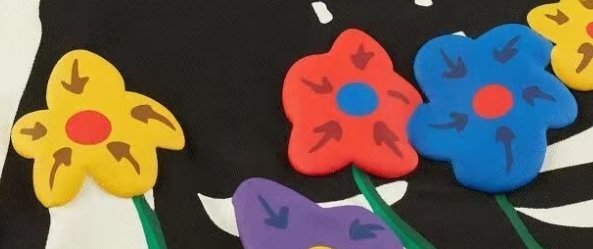When it comes to screen printing, yellow plastisol ink is a standout choice for achieving vibrant, eye-catching designs. However, the quality of the print relies not only on the ink but also on the adhesives used during the process. Selecting the right screen printing adhesive ensures superior bonding, long-lasting results, and an efficient workflow.
In this article, we’ll explore the benefits of yellow plastisol ink, review compatible adhesives, and highlight tips for optimizing your screen printing process. Along the way, we’ll discuss related products like xen white plastisol ink and provide insights from xenon plastisol ink reviews.
The Importance of Adhesives in Screen Printing
Screen printing adhesives are crucial for ensuring the ink adheres seamlessly to the fabric. For projects using yellow plastisol ink, adhesives play a vital role in maintaining the ink’s durability and vibrancy. They ensure that the ink stays intact on various substrates, even after repeated washing and use.
Adhesives come in different forms, including sprays, liquids, and powders. Choosing the right adhesive depends on the specific ink type, fabric, and desired print quality. The adhesive must complement the properties of yellow plastisol ink for optimal results.
Benefits of Yellow Plastisol Ink in Screen Printing
Yellow plastisol ink is a preferred choice among screen printers due to its versatility and striking color. Its benefits include:
1. Vivid Color Output
The opacity of yellow plastisol ink makes it ideal for creating bright, bold designs on both light and dark fabrics.
2. Durability
Plastisol ink forms a thick, rubbery layer on the surface of the fabric, ensuring the design withstands wear and tear.
3. Ease of Use
Unlike water-based inks, yellow plastisol ink does not dry on the screen, making it easier to work with for long production runs.
4. Compatibility with Adhesives
Yellow plastisol ink works well with various adhesives, allowing printers to achieve clean, sharp prints that last.
Key Features of Screen Printing Adhesives
To achieve professional results with yellow plastisol ink, the adhesive must meet the following criteria:
1. Strong Bonding Properties
The adhesive should create a secure bond between the ink and the fabric, ensuring the design does not peel or fade.
2. Heat Resistance
Since plastisol inks require curing at high temperatures, the adhesive must withstand the heat without losing effectiveness.
3. Versatility
An ideal adhesive works well on different substrates, from cotton to polyester blends.
4. Ease of Application
Adhesives that are easy to apply save time and reduce waste during the printing process.
Top Adhesive Choices for Yellow Plastisol Ink
Based on industry reviews and expert recommendations, the following adhesives are ideal for use with yellow plastisol ink:
1. Spray Adhesives
Spray adhesives are quick and convenient, making them a popular choice for screen printers. They provide an even layer of adhesive, ensuring the ink adheres smoothly to the substrate.
2. Liquid Adhesives
Liquid adhesives offer superior bonding strength, especially for high-stress designs or heavy fabrics. They are particularly effective with thick, opaque inks like xen white plastisol ink.
3. Powder Adhesives
Powder adhesives are commonly used for specialty prints and heat transfers. They enhance the durability of yellow plastisol ink, making it resistant to cracking and peeling.
Insights from Xenon Plastisol Ink Reviews
Printers often rely on industry reviews to select the best inks and adhesives. Xenon plastisol ink reviews consistently highlight the brand’s commitment to quality and performance.
Key Takeaways from Xenon Reviews:
- Color Vibrancy: Printers praise xenon white plastisol ink for its bright, opaque finish, making it a reliable choice for underbases or highlights.
- Ease of Use: Many reviews note that xenon plastisol ink has a smooth application process, even for beginners.
- Durability: The ink’s ability to withstand repeated washing and wear is a recurring highlight in xenon plastisol ink reviews.
For projects involving yellow plastisol ink, pairing it with compatible Xenon inks and adhesives ensures consistent, high-quality results.

Tips for Optimizing Yellow Plastisol Ink with Adhesives
Maximizing the potential of yellow plastisol ink involves using the right techniques and materials. Here are some tips for success:
1. Test Adhesive Compatibility
Before starting a large production run, test the adhesive with yellow plastisol ink on a sample fabric. This helps identify any issues with bonding or curing.
2. Maintain Proper Curing Temperatures
Plastisol inks require curing at around 320°F (160°C). Ensure the adhesive can withstand this heat without compromising its effectiveness.
3. Use High-Quality Inks and Adhesives
Investing in premium products like xen white plastisol ink and high-performance adhesives minimizes the risk of errors and enhances the final print quality.
4. Monitor Adhesive Application
Apply adhesive evenly to avoid uneven bonding or patches in the final design. This is particularly important when using powder or liquid adhesives.
Why Yellow Plastisol Ink Stands Out
Yellow plastisol ink is a versatile and dependable choice for screen printing professionals. Its ability to produce bright, bold designs makes it a favorite for creating logos, promotional materials, and more.
When combined with the right adhesive, yellow plastisol ink delivers unparalleled results. Whether you’re using a spray adhesive for quick application or a liquid adhesive for added durability, ensuring compatibility is key to success.
Final Thoughts: Choosing the Best Adhesives for Yellow Plastisol Ink
Screen printing is both an art and a science, and achieving the perfect print requires the right materials. By selecting high-quality adhesives and inks like yellow plastisol ink, printers can produce vibrant, durable designs that stand the test of time.
For those exploring options, xenon plastisol ink reviews offer valuable insights into industry-leading products, including xenon white plastisol ink. Pairing these products with reliable adhesives and precise application techniques ensures professional results every time.



